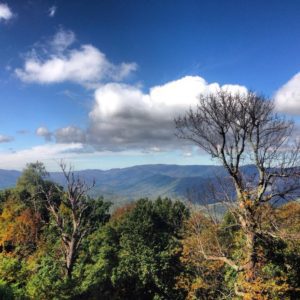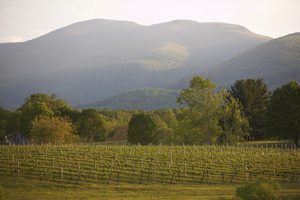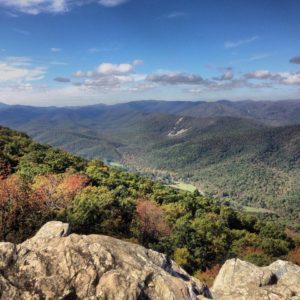Wild Virginia Leads Tour of the Pipeline Route
By Jessie Thuma
On September 9th, Wild Virginia’s President, Ernie Reed, and Conservation Director, David Sligh, led a group of hikers on a tour of the proposed route of the Atlantic Coast Pipeline (ACP). Participants gathered at Shenandoah Joe’s for some coffee, snacks, and small talk before piling into vans and hitting the road to Nelson County. Nelson County is one of Virginia’s regions that will be most effected by Dominion’s proposed pipeline, which will bring construction within feet of some residents’ homes, bulldoze through nature preserves, and pollute the area’s source of freshwater and drinking water.

The first stop on the tour was at the Rockfish Valley Foundation Natural History Center to see where part of the pipeline would cut through the beautiful mountain valley and across land dedicated to the historic site. Ernie and David explained the negative impacts that the pipeline would have on residents of Nelson County and how Dominion continues to skirt around these issues. The proposed route has been changed countless times, weaving through different nature preserves and regions of lower income. Dominion continues to claim that the pipeline will have no impact on property values and that construction close to houses will not affect residents’ daily lives. Dominion insists that once construction has ended, the pipeline will be invisible, but it’s clear looking at the open valley skyline that the pipeline will be anything but invisible.
The second stop was at the home of Lilla and Will Fenton where the couple runs a family inn with a spectacular view of the Blue Ridge Mountains. Dominion has taken the couple to court twice when the the Fentons refused to allow surveying of their land, but still to no avail. The proposed Atlantic Coast Pipeline would run within 20 feet of the inn and construction would reduce the visitors to the inn to zero, and ruin their livelihood. The couple refused to back down and will sue Dominion for damages if or when the first dozer touches their property.

Their story is not unique in Nelson county, where residents along the route are standing their ground against Dominion and refusing to let the energy company take their land and destroy the natural beauty of the mountains. And these residents are not alone in their fight–environmental groups across the state, from community coalitions to nonprofits to law firms, are pushing back against Dominion’s faulty research and environmental impact analysis to stop the pipeline. Just this morning, the Southern Environmental Law Center, Appalachian Mountain Advocates, and the Allegheny-Blue Ridge Alliance released a report confirming that building additional pipelines through Virginia is unnecessary, and that the Transcontinental Pipeline that currently runs along the East Coast is more than sufficient to provide needed energy from natural gas. Despite the thousands of voices against Dominion, the company continues to push for construction and ignore the obvious consequences to the environment and to public well-being.

The final stop on the tour was at one of the peaks of the Appalachian Trail, where Ernie and David led hikers into the woods to see the bare patches of hard greenstone that comprise the backbone of the old mountain chain, and to take in the scenery of the moss covered trees and the burst of green leaves that are slowly turning over to fall colors. The hike through the woods really hit home what a huge loss Virginia would suffer if Dominion gets the go-ahead to build their pipeline.
You can make a difference by signing the petition to tell the Forest Service “No pipelines through our national forests!” Every voice matters in the fight to protect our forests and our community!
To read the report by the Southern Environmental Law Firm disavowing the necessity of a new pipeline, click here.
For more information, see: